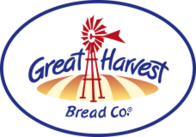Real Food. Real People.
Every culture and religion has its holiday bread. If you're interested in learning about holidays in other cultures, here's some information about holiday bread around the world.
Bread Brings Cultures Together
If there's one food that brings people together, its bread, this essential diet staple is present in most meals and celebrations. Whether you celebrate Christmas, Chanukkah, or any other holiday this month, bread will surely be present at your dinner table. Great Harvest of Newtonville has prepared this post for you to learn about some of the bread people all around the world consume when their holidays come around. Maybe this year you'll try something new.Julkake, a Norwegian Favorite
Julkake is prepared in many Scandinavian countries, particularly in Norway, during the Christmas season. This bread, which literally means Yule Bread, is soft and fluffy like cake, filled with candied fruit, and flavored with delicious cardamom. It can be glazed or dusted with sugar and garnished with nuts and more candied fruit. It can also be served plain and warm with fresh butter or Norwegian Brunst Cheese (brown goat milk cheese). Try Food for a Hungry Soul's recipe to enjoy this Scandinavian classic this winter.Start the Year With a Mexican Rosca de Reyes
Rosca or Roscon de Reyes is traditionally eaten in Spain, Mexico, and other Hispanic communities on January 6th. Mexican children, particularly in the center and south of the country, get their holiday gifts that same day. Instead of receiving Christmas presents from Santa Claus, they get them from The Three Wise Men. To celebrate this day, Mexicans, eat their traditional Rosca de Reyes alongside a cup of hot chocolate. This bread or cake is flavored with orange essence, it usually comes in an oval shape, and it's garnished with sugar, dried fruit, and nuts. More modern versions come with a chocolate filling. The Rosca de Reyes tradition indicates that you should place a small trinket, usually a figurine of baby Jesus, hidden somewhere in the bread to represent the flight of the Holy Family from the Massacre of the Innocents. Whoever finds the figurine must provide the tamales for the Candlemas Day Celebration on February 2nd. What are your holiday bread traditions? Do you make your own or prefer to visit your favorite bakery in Newtonville? You can find delicious winter options at Great Harvest of Newtonville. Try their winter menu or call them up at (617) 928-1162 to learn about their options.13 Desserts in Provence
The French region of Provence has it's own Christmas tradition called Les Treize Desserts de Nôel (The Thirteen Christmas Desserts). It started in the 19th century in Marseille, and of course, it's filled with religious symbolism. The 13 desserts represent Jesus and his 12 Apostles. The desserts are all served at the same time, and every person must eat a small piece of each for good luck. The types of desserts vary from home to home, but you can commonly find these:- Almonds, raisins, figs, and hazelnuts, representing the mendicant order.
- Fresh or candied fruit such as apples, grapes, mandarin, or melon
- Calissons (marzipan)
- Bisotinis (cookies)
- Yule Log
- Pomp à Huile, a sweet bread made with olive oil instead of butter.
Panettone, an Italian Staple
This classic Italian dessert, which you can easily recognize by its tall shape is made from a light dough and filled with candied fruit and raisins. According to some sources, the Panettone tradition dates back to the Middle Ages. One of the many stories says that a servant accidentally burned his masters holiday cake, so he baked a new one with ingredients he had stashed away: yeast and candied fruit. The shape we all know is the work of Angelo Motta. He chose to give the cake its tall domed shape by letting the dough rise three times before baking. Do you have the time and patience to make a classic Italian Panettone?The Germans Have the Stollen
Like so many other breads on this list, the German Stollen is filled with dried fruit, but it also has marzipan and a sugar coating. This pastry dates back to the 15th century in Dresden. In the olden days, Stollen was made without butter or milk because of a ban placed on those ingredients by the Catholic Church. Once the ban was lifted, and dairy came back into the picture, this indulgent Christmas bread became part of the holiday celebrations.Get Your Bakery Fresh Holiday Bread in Newtonville
It's fun and exciting to learn about bread, but it's even better to eat it. Great Harvest of Newtonville has some fantastic treats for you to try this winter. Why don't you call them at (617) 928-1162 to learn about their menu? If you're worried about staying shape over the holidays, they have some healthy options too!
Great Harvest Bread of Newtonville
We'd love to be in touch with you

